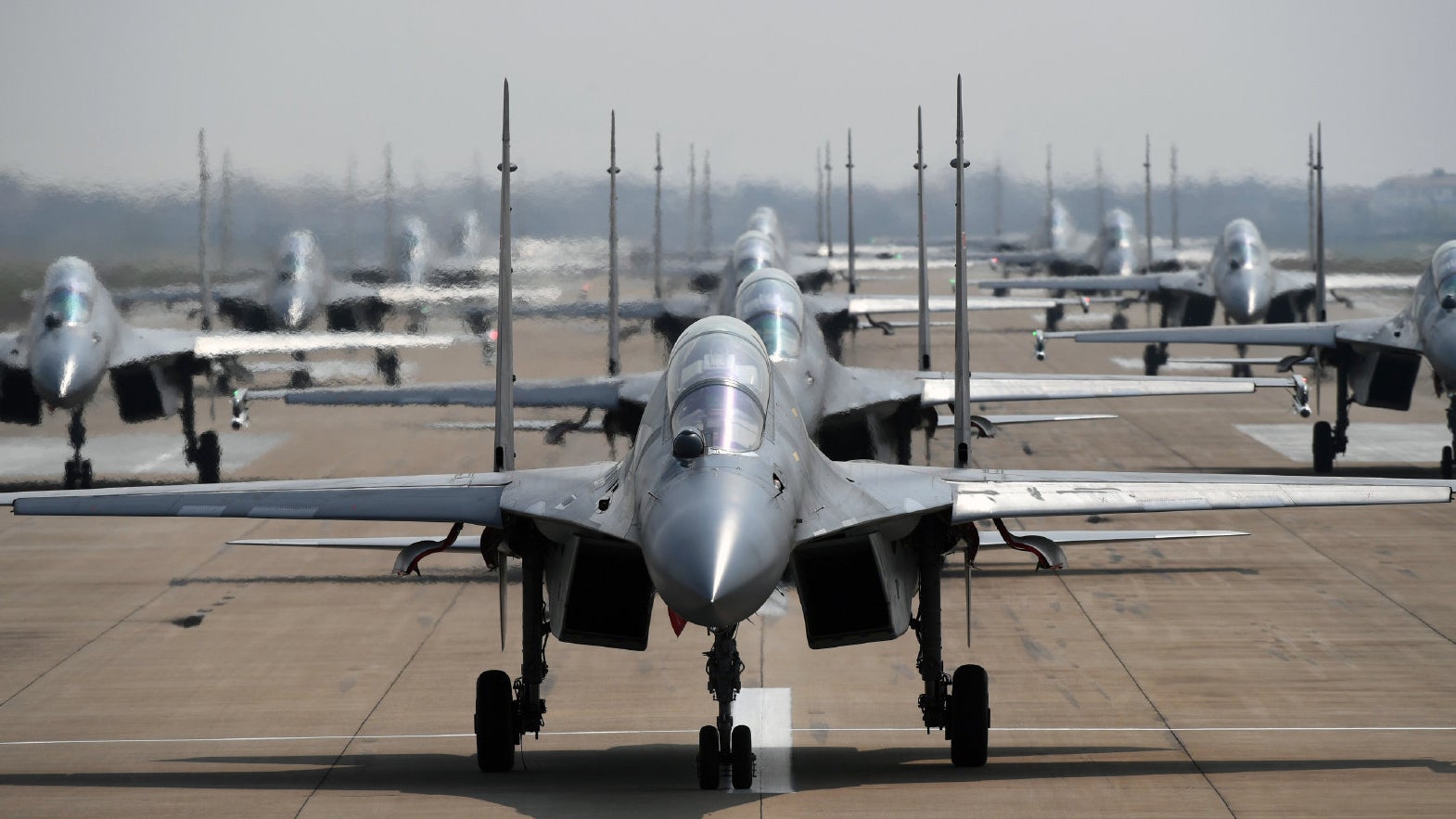China today sent a record number of aircraft into the southwestern corner of Taiwan’s Air Defense Identification Zone, or ADIZ. So far today, 56 aircraft have done so, constituting the largest group of People’s Liberation Army (PLA) warplanes to fly through that region in recent months. The latest total included bombers, multirole fighters, and surveillance aircraft and tops the previous daily record of 39 aircraft just two days ago, each being recorded in two waves. In all, the last four days — so far — have seen 149 PLA aircraft enter the ADIZ, including another 16 aircraft operating in the ADIZ yesterday, and 38 last Friday. Elsewhere in the wider region, four flattops from three different countries — Japan, the United Kingdom, and the United States — have recently been engaged in joint maneuvers together in waters near the Japanese home islands.
According to a statement from Taiwan’s Ministry of Defense, the first wave of PLA aircraft that entered the ADIZ earlier today comprised 12 H-6 bombers, 34 J-16 multirole fighters (Chinese-made derivatives of the Russian Su-30 Flanker), two Su-30s, two KQ-200 anti-submarine patrol planes, and a pair of KJ-500 airborne early warning and control (AEW&C) aircraft. A second wave of four J-16s then appeared the same evening.
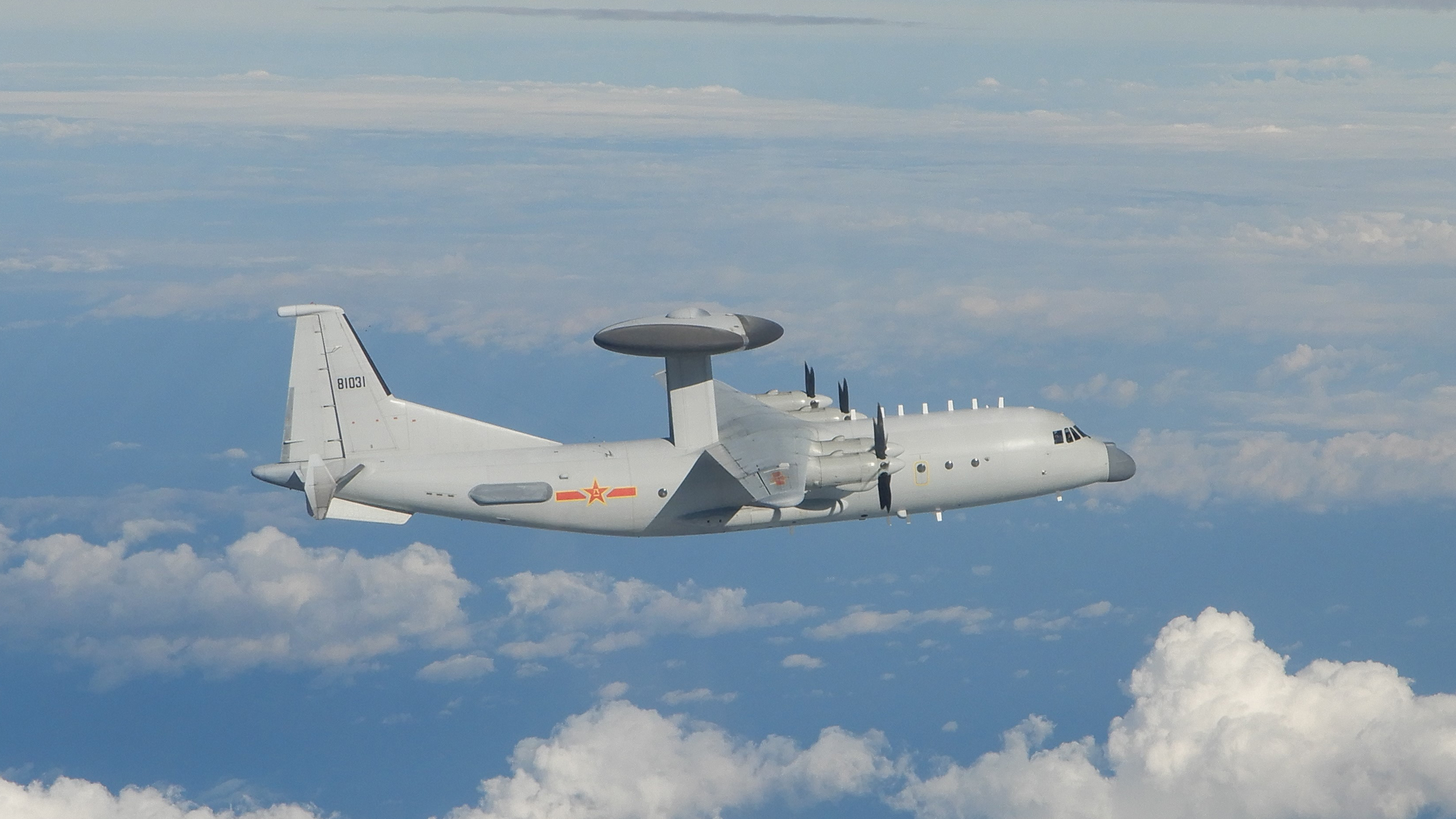
These aircraft were operating in the vicinity of the disputed Pratas Island in the South China Sea. In recent years, the Taiwanese-controlled island has been identified as a potential flashpoint in the area, with some observers suggesting Beijing could attempt to capture Pratas as a way to demonstrate progress toward its goal of reunifying Taiwan without sparking a wider conflict.
For its part, Taiwan’s government has protested against the recent PLA activity in the ADIZ. “China has been wantonly engaged in military aggression, damaging regional peace,” Su Tseng-chang, the Taiwanese premier, said on Saturday.
Yesterday, the U.S. Department of State added its voice of concern after the Chinese activity, with the following statement:
“The United States is very concerned by the People’s Republic of China’s provocative military activity near Taiwan, which is destabilizing, risks miscalculations, and undermines regional peace and stability. We urge Beijing to cease its military, diplomatic, and economic pressure, and coercion against Taiwan.”
Traditionally, October has seen a spike in political rhetoric between China and Taiwan, both countries marking their National Days in the same month. The People’s Republic of China marked its National Day on Friday, while Taiwan will celebrate its own next Sunday. However, previous years have not seen such a dramatic increase in PLA aerial activity over the Strait.
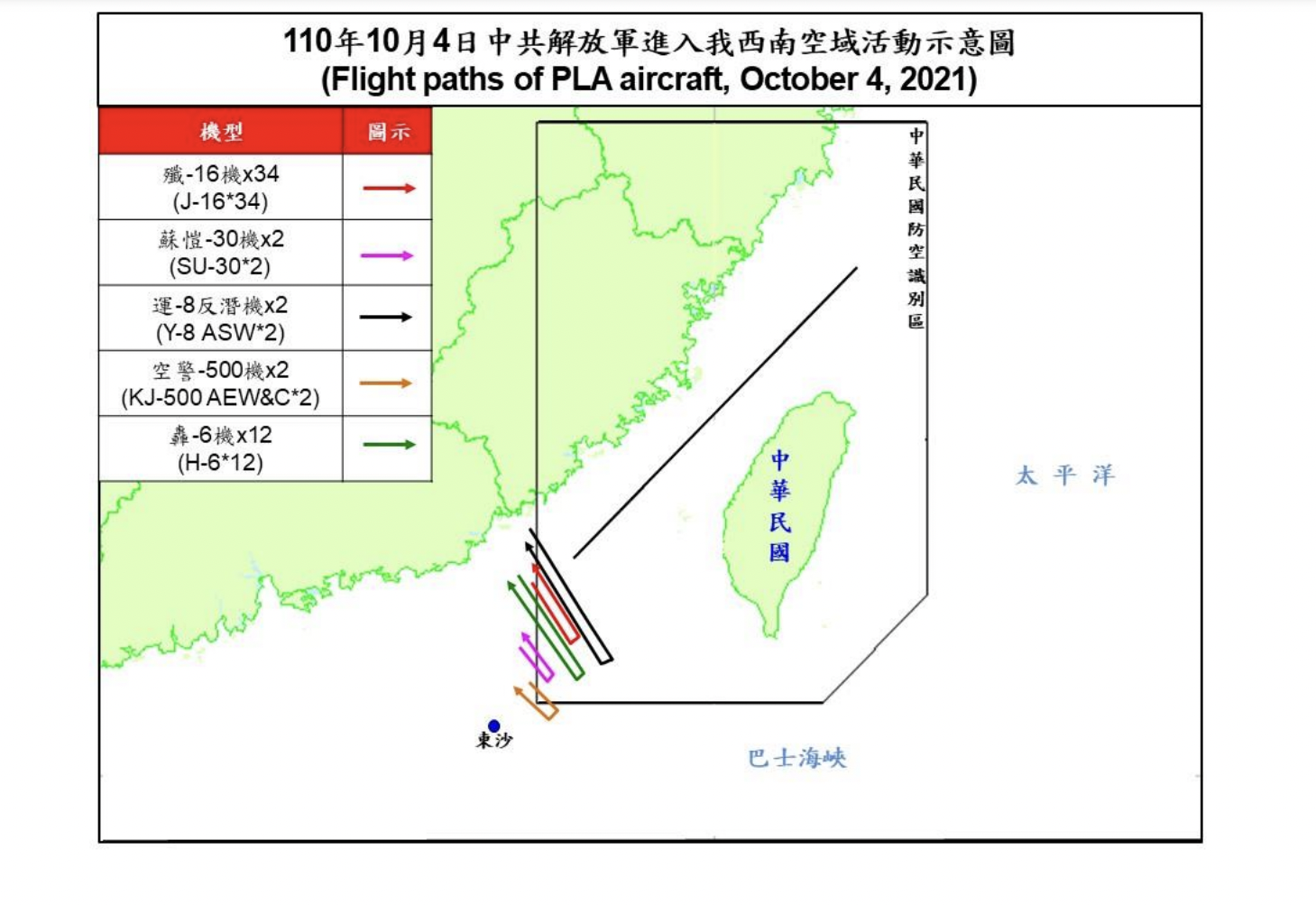
As well as larger numbers of PLA aircraft now entering the ADIZ on a more regular basis, these formations increasingly include considerable numbers of fighter jets and bombers, as well as the more familiar maritime patrol and surveillance aircraft. According to the Financial Times, since September last year, China has sent military aircraft into the ADIZ for an average of 20 days each month.
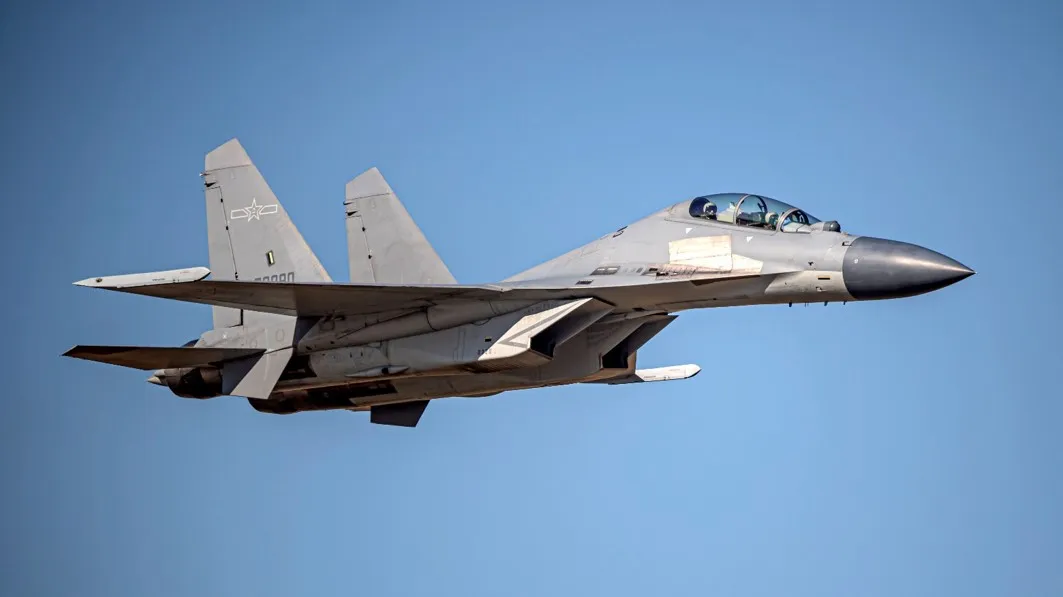
It is important to note that China has been conducting these kinds of sorties on an almost daily basis since 2020, and the PLA aircraft flew over international waters the entire time during their sorties. On the other hand, the ramped-up Chinese aerial activity is clearly a show of force, and it’s likely also no coincidence that it comes amid large-scale naval maneuvers involving Japan, the United Kingdom, the United States, and other allies.
Recent drills in waters near the Japanese island of Okinawa involved the Japanese helicopter carrier Ise, HMS Queen Elizabeth, and the U.S. Navy carriers USS Carl Vinson and Ronald Reagan, plus their escorts, and warships from other countries, representing a significant gathering of naval power.
The Japan Maritime Self-Defense Force (JMSDF) announced that the maneuvers, which also involved vessels from Canada, the Netherlands, and New Zealand, took place over the weekend as part of efforts to “realize a Free and Open Indo-Pacific” and involved 17 surface ships.

Meanwhile, the British Royal Navy aircraft carrier HMS Queen Elizabeth has now re-entered the South China Sea, where China has expansive territorial claims, repeating an action that has drawn strong criticism from Beijing in the past. The Royal Navy confirmed via a tweet today that the carrier had passed through the Luzon Strait between Taiwan and Luzon Island of the Philippines.
The British carrier and other vessels within Carrier Strike Group 21 (CSG21) also entered the South China Sea in July, while traveling from Singapore to the Philippine Sea. You can read all about that in this previous story. At that time, a spokesperson for China’s Ministry of National Defense, Wu Qian, warned the United Kingdom against any actions that sought “to destabilize regional peace,” declaring that “the Chinese Navy will take any necessary actions to countermeasure such behavior.”
More recently, another Royal Navy warship passed through the Taiwan Strait. On September 27, the Type 23 frigate HMS Richmond, which had broken away from CSG21, sailed through the strait as part of a voyage from Japan to Vietnam. This was the first time a British warship had transited this sensitive waterway since 2008.
As well as the backdrop of these ongoing military exercises in the region, there are diplomatic issues currently at stake that could have also prompted an uptick in PLA aerial activity in the Taiwan Strait.
A delegation of French senators is visiting Taiwan from today, in a move that Chinese media has described as “provocative” and a “serious violation of the one-China principle recognized by [the] French government.” While the French Navy has not been involved in the latest multilateral exercises in the region, the response points to the wider tensions between China and Taiwan.
Beijing claims Taiwan as its territory and has made repeated threats to invade and seize control of the island by force if necessary, including if the island declares full independence. This rhetoric has been stepped up under the leadership of Xi Jinping, who has referenced long-term plans for “reuniting” China and Taiwan. Earlier this year, Admiral Philip Davidson, at the time the commander of United States Indo-Pacific Command (USINDOPACOM), warned that China could invade Taiwan within the next six years.
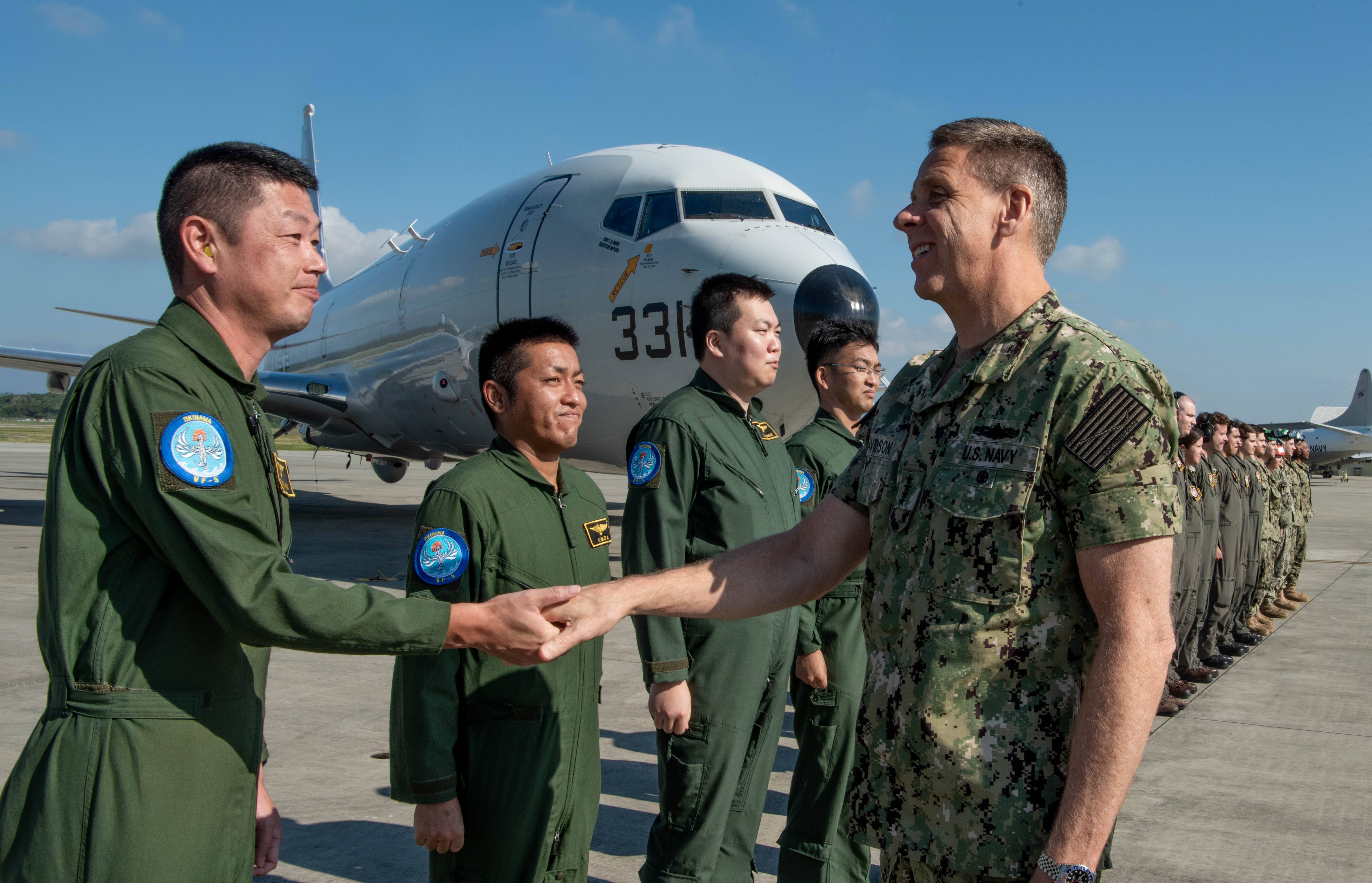
China’s Ministry of Foreign Affairs responded today to the activities in the region by the U.S. Navy and its partners, describing U.S. weapons sales to Taiwan as well as ships navigating the Taiwan Strait as “provocative action that harmed U.S-China relations.”
“China will take all necessary countermeasures and resolutely crush any ‘Taiwan independence’ plot,” Foreign Ministry spokesperson Hua Chunying said in a statement.
The arms sales mentioned by Beijing include the recent award to Boeing of a $220 million contract to supply Taiwan with the Harpoon Coastal Defense System (HCDS). In the past, The War Zone has looked at the strategic implications of Taiwan deploying this highly survivable counter to any potential naval assault by forces from the mainland.

For the Taiwanese military, such numbers of aircraft, with this level of frequency, means that monitoring and intercepting them is a considerable burden. So far this month, 149 aircraft have been detected in the ADIZ, compared with 117 for all of September. In this latest incident, Taiwan’s Ministry of Defense issued its standard response, noting that “airborne alert sorties had been tasked, radio warnings issues, and air defense missile systems deployed to monitor the activity.”
With large quantities of PLA aircraft reported in the ADIZ for four days in a row now, there is little to suggest that similar numbers won’t be sustained, or the situation further escalated. More generally, however, the increasingly routine sorties by the PLA are indicative of a willingness to conduct maneuvers that not only draw strong criticism from Taiwan but also the wider international community, while still conforming to gray-zone activity — demonstrating military power but remaining below the threshold for an act of war.
Increasingly, too, Taiwan seems to be highlighting that Beijing no longer seems to be making efforts to hide the fact that these actions also serve to intimidate. In a tweet on Saturday, the Taiwanese Ministry of Foreign Affairs stated that it found it “strange the PRC doesn’t bother faking excuses anymore.”
As long as the PLA keeps up that approach in the Taiwan Strait, and within the wider South China Sea, we are also likely to see more concerted efforts by Japan, the United Kingdom, the United States, and other allies to conduct joint maneuvers as well as “freedom of navigation” exercises in the region, which, in turn, are almost guaranteed to provoke more complaints from Beijing.
Contact the author: thomas@thedrive.com
